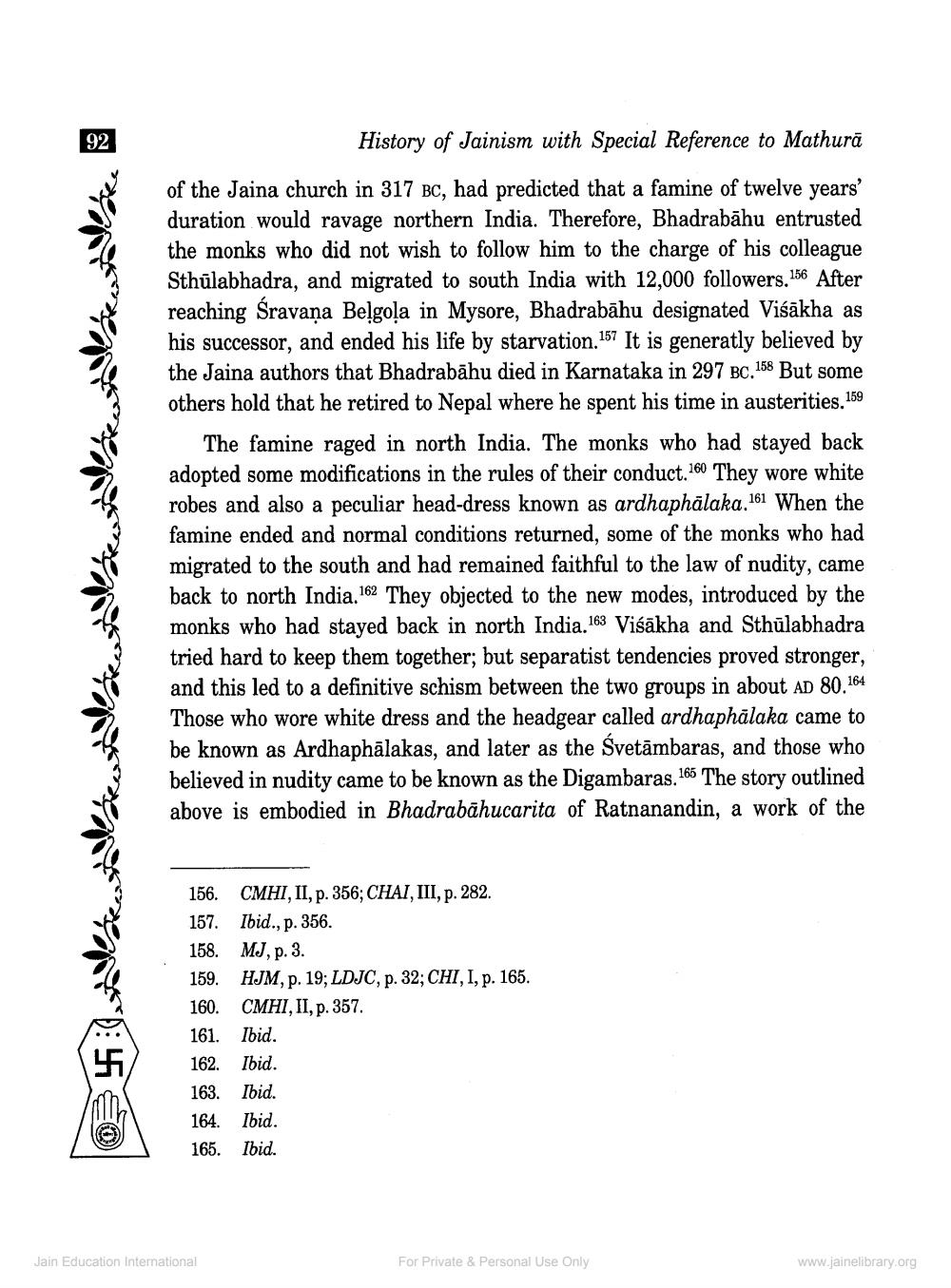________________
92
History of Jainism with Special Reference to Mathurā
of the Jaina church in 317 BC, had predicted that a famine of twelve years' duration would ravage northern India. Therefore, Bhadrabāhu entrusted the monks who did not wish to follow him to the charge of his colleague Sthūlabhadra, and migrated to south India with 12,000 followers. 156 After reaching Sravana Belgola in Mysore, Bhadrabāhu designated Viśākha as his successor, and ended his life by starvation.157 It is generatly believed by the Jaina authors that Bhadrabāhu died in Karnataka in 297 BC.158 But some others hold that he retired to Nepal where he spent his time in austerities.159
The famine raged in north India. The monks who had stayed back adopted some modifications in the rules of their conduct.160 They wore white robes and also a peculiar head-dress known as ardhaphālaka.161 When the famine ended and normal conditions returned, some of the monks who had migrated to the south and had remained faithful to the law of nudity, came back to north India. 162 They objected to the new modes, introduced by the monks who had stayed back in north India.163 Viśākha and Sthūlabhadra tried hard to keep them together; but separatist tendencies proved stronger, and this led to a definitive schism between the two groups in about AD 80.164 Those who wore white dress and the headgear called ardhaphālaka came to be known as Ardhaphālakas, and later as the Svetāmbaras, and those who believed in nudity came to be known as the Digambaras. 165 The story outlined above is embodied in Bhadrabāhucarita of Ratnanandin, a work of the
156. CMHI, II, p. 356; CHAI, III, p. 282. 157. Ibid., p. 356. 158. MJ, p. 3. 159. HJM, p. 19; LDJC, p. 32; CHI, I, p. 165. 160. CMHI, II, p. 357. 161. Ibid. 162. Ibid. 163. Ibid. 164. Ibid. 165. Ibid.
Jain Education International
For Private & Personal Use Only
www.jainelibrary.org




